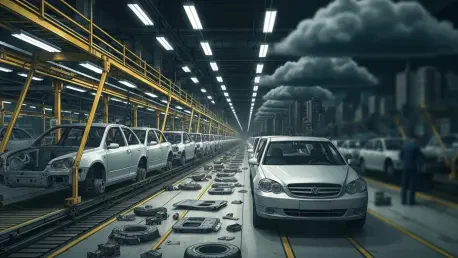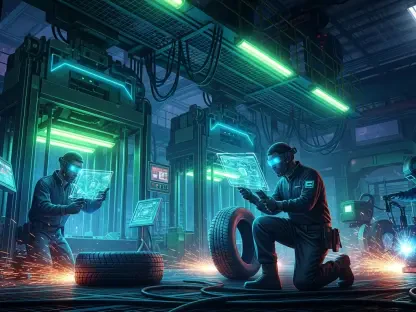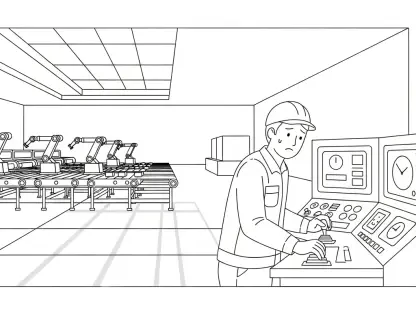Diving into the heart of a critical issue shaking the global auto industry, we’re thrilled to sit down with Kwame Zaire, a renowned manufacturing expert with deep insights into electronics, equipment, and production management. With a focus on predictive maintenance, quality, and safety, Kwame has been closely following the unfolding crisis at Nexperia, a Dutch semiconductor maker caught in a geopolitical storm. This interview explores the intricate web of supply chain vulnerabilities, the impact of international tensions on technology production, and the ripple effects on automakers worldwide, while also shedding light on the broader implications for the semiconductor industry.
How did Nexperia become a key player in the auto industry, and what kind of components do they supply?
Nexperia is a semiconductor manufacturer that specializes in discrete chips, like switches and logic chips, which are essential for various automotive functions. Think of things like adaptive LED headlights, electric vehicle battery management systems, and anti-lock brakes—these are the kinds of systems that rely on Nexperia’s components. While they might not dominate in terms of revenue, their share in the sheer volume of chips used in vehicles is significant. Over time, they’ve carved out a niche as a go-to supplier for automakers because of the reliability and specificity of their products.
Can you walk us through the background of Nexperia’s ownership and how it ties into the current crisis?
Nexperia started as a spinoff from Philips Semiconductors about two decades ago, headquartered in Nijmegen, Netherlands. In 2018, it was acquired by Wingtech Technology, a Chinese company with partial state ownership, for $3.6 billion. This ownership shift has become a flashpoint because it’s raised concerns among Western governments about the control of critical technology, especially in the context of broader U.S.-China tensions over tech supremacy. That acquisition is really at the root of the geopolitical friction we’re seeing now.
What prompted the Dutch government to step in and take control of Nexperia, and how did they justify such a drastic move?
The Dutch government made a surprising move in mid-October by invoking a World War II-era law to effectively take control of Nexperia. They cited national security concerns, pointing to what they called “serious governance shortcomings” at the company. Their main worry was the potential loss of critical technological know-how that could undermine Europe’s economic security. It’s a rare and bold step, showing just how high the stakes are when it comes to protecting strategic industries like semiconductors.
How have geopolitical tensions between the U.S. and China amplified this situation?
This crisis is deeply tied to the broader U.S.-China struggle over technological dominance. Late last year, the U.S. placed Wingtech on its “entity list,” which imposes export controls due to national security risks, and later extended those restrictions to Nexperia as a subsidiary. This put pressure on allies like the Netherlands to align with U.S. policy. In response, China blocked the export of Nexperia chips from its Dongguan plant, accusing the Dutch of creating chaos in the supply chain. Europe, caught in the middle, is navigating a delicate balance between economic interests and geopolitical alliances.
What has been the direct impact of this crisis on the global auto industry?
The impact on the auto industry has been severe because modern vehicles rely heavily on the kind of discrete chips Nexperia produces—sometimes dozens or even hundreds per car. When China halted exports from the Dongguan plant, which handles about 70% of Nexperia’s end-product capacity, it created a bottleneck. For instance, Honda had to stop production at its factory in Mexico, which builds the HR-V crossover for North America. Other major automakers like Ford, General Motors, and Mercedes-Benz are scrambling to find alternatives, but replacing Nexperia’s chips at scale in the short term is incredibly challenging.
How are automakers responding to the shortage of Nexperia’s chips, and what challenges do they face in adapting?
Automakers are in crisis mode. Companies like Nissan have set aside significant financial provisions to absorb the impact, while others, such as BMW and Volkswagen, are dipping into reserve stockpiles to keep assembly lines running. The challenge is that Nexperia’s chips are highly specialized, and finding a substitute isn’t just a matter of switching suppliers—it often requires redesigning systems or requalifying components, which can take months. Mercedes-Benz, for example, has been scouring the globe for alternatives, but the scale of the shortage makes this a daunting task.
What signs of resolution are you seeing, and how optimistic are you about a full recovery in the supply chain?
There are some glimmers of hope. After a high-profile meeting between U.S. and Chinese leaders, China agreed to ease the export ban on Nexperia chips as part of a trade truce. Honda has also received word that shipments from China have resumed, with plans to restart production in Mexico soon. The EU and China are engaging in consultations to simplify export procedures. However, issues persist—Nexperia’s headquarters suspended wafer shipments to its Chinese factory over payment disputes and quality concerns, so it’s not a full resolution yet. I’m cautiously optimistic, but the underlying tensions mean we’re not out of the woods.
What is your forecast for the semiconductor supply chain in the auto industry over the next few years?
I think we’re heading into a period of significant transformation. The Nexperia crisis has exposed just how fragile the global supply chain is, especially for critical components like semiconductors. Over the next few years, I expect automakers and governments to push for greater regionalization of production to reduce reliance on single points of failure, particularly in geopolitically sensitive areas. We’ll likely see more investment in domestic manufacturing capabilities, but that’s a long-term fix. In the short term, volatility will persist as long as these international tensions remain unresolved. The industry needs to brace for more disruptions while working toward resilience.









